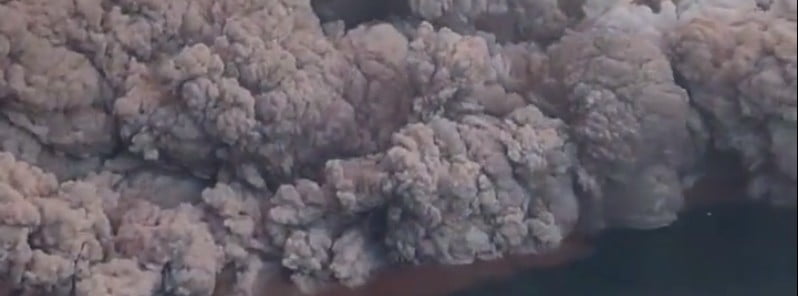Intense explosions and large pyroclastic flows took place at Stromboli volcano, Italy on December 4, 2022, generating a small local tsunami.
Seismic tremor at the volcano started increasing around 14:00 UTC, followed by lava overflowing from the North crater area at 14:10 UTC in conjunction with intense explosive activity.
An intense explosion was registered at 14:16 UTC as well as several smaller pyroclastic flows at 14:31 UTC along the upper part of the Sciara del Fuoco.
A very large pyroclastic flow was recorded at 15:19 UTC, producing abundant ash which temporarily blocked the view of the summit area.
The flow quickly descended the Sciara del Fuoco and reached the sea, generating a local tsunami that reached 1.5 m (4.9 feet).
Geological summary
Spectacular incandescent nighttime explosions at this volcano have long attracted visitors to the “Lighthouse of the Mediterranean.”
Stromboli, the NE-most of the Aeolian Islands, has lent its name to the frequent mild explosive activity that has characterized its eruptions throughout much of historical time.
The small, 924-m-high (3 031 feet) island is the emergent summit of a volcano that grew in two main eruptive cycles, the last of which formed the western portion of the island.
The Neostromboli eruptive period from about 13 000 to 5 000 years ago was followed by formation of the modern Stromboli edifice. The active summit vents are located at the head of the Sciara del Fuoco, a prominent horseshoe-shaped scarp formed about 5 000 years ago as a result of the most recent of a series of slope failures that extend to below sea level.
The modern volcano has been constructed within this scarp, which funnels pyroclastic ejecta and lava flows to the NW. Essentially continuous mild strombolian explosions, sometimes accompanied by lava flows, have been recorded for more than a millennium.2
1 Comunicato Stromboli – INGV – Activity update issued at 18:06 UTC on December 4, 2022
2 Stromboli – Geological summary – GVP




